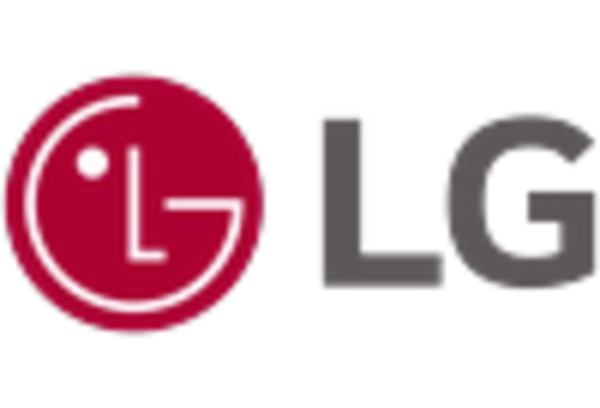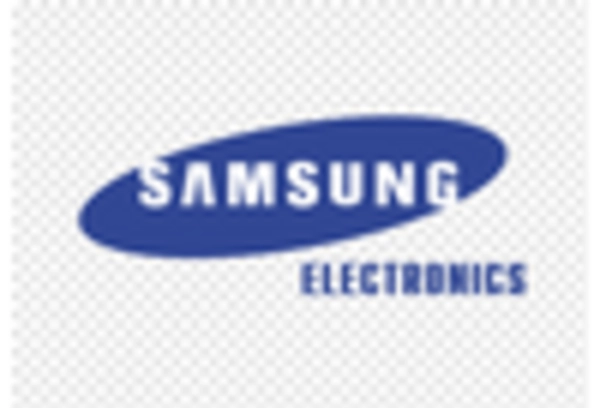Integration with Smart Home Devices
The integration of wireless displays with smart home ecosystems is emerging as a key driver for the wireless display market. As consumers increasingly adopt smart home technologies, the ability to control and display content on larger screens wirelessly becomes more appealing. This trend is particularly evident in the entertainment sector, where users desire seamless connectivity between devices. The wireless display market is poised to capitalize on this trend, as it aligns with the growing consumer preference for convenience and enhanced user experiences. Market analysts suggest that this integration could lead to a 20% increase in demand for wireless display solutions over the next few years, as more households embrace smart technology.
Increased Focus on Health and Safety
The wireless display market is also influenced by heightened awareness of health and safety standards in public spaces. Businesses are increasingly seeking contactless solutions to minimize physical interactions, particularly in environments such as retail and hospitality. Wireless displays offer a hygienic alternative to traditional screens, allowing users to share content without direct contact. This shift is likely to drive growth in the market, as organizations prioritize health-conscious technologies. The wireless display market is expected to see a rise in demand for such solutions, potentially leading to a market expansion of 10% annually as businesses adapt to new health protocols and consumer expectations.
Rising Demand for Remote Work Solutions
The shift towards remote work has catalyzed the growth of the wireless display market. As organizations adapt to flexible work arrangements, the need for efficient collaboration tools has intensified. Wireless displays facilitate virtual meetings and presentations, allowing teams to connect effortlessly regardless of location. This trend is reflected in the market, which is expected to reach a valuation of $5 billion by 2026. The wireless display market is likely to see increased investments in solutions that support remote work, as companies seek to enhance productivity and maintain effective communication among dispersed teams. This demand is further fueled by the growing reliance on cloud-based applications and services.
Emergence of Interactive Display Technologies
The rise of interactive display technologies is significantly impacting the wireless display market. These technologies enable users to engage with content in dynamic ways, enhancing the overall viewing experience. Applications in education, retail, and corporate environments are particularly notable, as interactive displays facilitate collaboration and engagement. The wireless display market is likely to benefit from this trend, with projections indicating a potential market growth of 12% over the next few years. As more sectors recognize the value of interactive solutions, the demand for wireless displays that support these features is expected to increase, driving innovation and investment in the market.
Technological Advancements in Wireless Standards
The wireless display market is experiencing a surge due to rapid advancements in wireless communication technologies. Innovations such as Wi-Fi 6 and Bluetooth 5.0 are enhancing connectivity, enabling higher data transfer rates and improved reliability. These advancements facilitate seamless streaming of high-definition content, which is crucial for both personal and professional applications. As a result, the market is projected to grow at a CAGR of approximately 15% over the next five years. This growth is driven by the increasing demand for high-quality wireless displays in various sectors, including entertainment and business. The wireless display market is thus positioned to benefit significantly from these technological improvements, as they enhance user experience and broaden the scope of applications.
















Leave a Comment